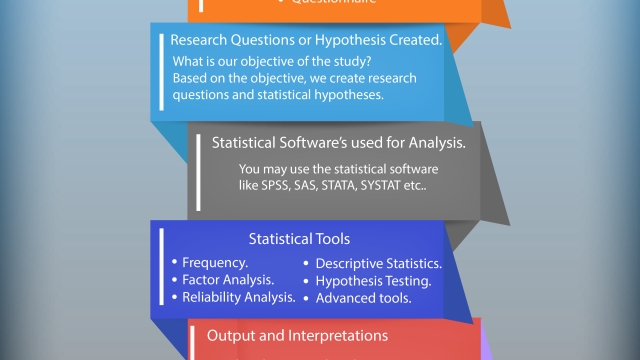
Whether you’re a scientist exploring the mysteries of the universe or a business owner searching for insights to drive your company forward, one thing remains constant: the power of research and data analysis. In an era where information is more abundant than ever before, harnessing the power of research and data analysis has become crucial for making informed decisions and uncovering hidden trends and patterns. By conducting thorough research and utilizing effective data analysis techniques, we are able to transform raw data into valuable knowledge, enabling us to navigate through the complexities of our world with newfound clarity and precision.
Research serves as the foundation upon which knowledge is built. It involves a systematic investigation and exploration of a subject matter, aiming to broaden our understanding and unravel the underlying truth. Through research, we are able to delve into uncharted territories, continually pushing the boundaries of what is known. Whether it involves conducting experiments, gathering data through surveys and interviews, or reviewing existing literature, research provides us with the evidence and information needed to drive progress in various domains.
However, research alone is often insufficient without the effective analysis of the data it generates. Data analysis is the process of transforming raw data into meaningful insights, allowing us to extract patterns, draw conclusions, and make informed decisions. It encompasses a range of techniques and methodologies, from basic statistical analysis to advanced computational modeling. By applying rigorous data analysis techniques, we can uncover relationships, trends, and correlations within the data that might otherwise remain hidden. This allows us to make evidence-based decisions and identify areas for improvement or innovation.
In this article, we will explore the immense power of research and data analysis, highlighting their importance across different fields and industries. We will delve into the various methods and techniques employed in research and data analysis, showcasing their impact on decision-making, problem-solving, and innovation. By understanding the foundation of research and the possibilities unlocked through data analysis, we can harness their power to drive change, uncover novel insights, and make informed decisions in an increasingly complex world.
The Importance of Research
Research plays a pivotal role in our understanding of the world around us. It enables us to delve deep into various subjects and uncover valuable insights. Through research, we are able to gather information, test hypotheses, and analyze data to gain a comprehensive understanding of a particular topic. In today’s data-driven world, research has become more critical than ever before.
One of the key reasons why research is important is that it allows us to expand our knowledge and challenge existing theories. By conducting rigorous investigations, researchers contribute to the body of knowledge in their respective fields. Through their work, they push the boundaries of what we know, opening up new avenues for exploration and discovery. Research helps us stay at the forefront of innovation and fosters intellectual growth.
Moreover, research serves as the foundation for evidence-based decision making. Whether in the fields of science, healthcare, business, or policy-making, data-driven decisions are crucial for success. Research allows us to gather and analyze relevant data, which in turn helps us make informed choices. By relying on scientific evidence, research enables us to identify trends, patterns, and relationships, aiding us in making effective and efficient decisions.
Additionally, research plays a vital role in advancing society. It provides solutions to complex problems, drives technological advancements, and contributes to social progress. Through research, we gain valuable insights into human behavior, societal issues, and global challenges. These insights pave the way for the development of innovative solutions and strategies to tackle pressing problems.
In conclusion, research is of utmost importance as it expands our knowledge, enables evidence-based decision making, and drives societal progress. It allows us to explore new frontiers, challenge established theories, and find solutions to complex problems. By embracing research and data analysis, we equip ourselves with the power to make well-informed decisions and shape a better future.
Methods of Data Analysis
In the field of research and data analysis, various methods are employed to make sense of the vast amounts of information available. These methods enable researchers to extract meaningful insights and draw accurate conclusions. In this section, we will explore three commonly used approaches: descriptive analysis, inferential analysis, and predictive analysis.
Descriptive analysis is a fundamental method that aims to summarize and present data in a meaningful way. It involves examining the key features of a dataset, such as its central tendency, variability, and distribution. By using techniques such as graphs, charts, and summary statistics, researchers can gain a comprehensive understanding of the data at hand. This approach is particularly useful for describing patterns, trends, or relationships within a dataset.
Moving beyond descriptive analysis, inferential analysis takes the exploration of data to the next level. This method involves using statistical techniques to make inferences or predictions about a larger population based on a sample from that population. By applying probability theory and hypothesis testing, researchers can draw conclusions and support or reject hypotheses. Inferential analysis allows us to make informed and reliable statements about the wider context from a smaller subset of data.
Lastly, predictive analysis utilizes historical data to forecast future outcomes. This method involves developing models that can identify patterns and relationships within the data, and then using those models to make predictions. By leveraging various statistical and machine learning techniques, researchers can generate accurate forecasts and make informed decisions. Predictive analysis is extensively used in industries such as finance, healthcare, and marketing to anticipate future trends and behaviors.
In conclusion, the field of research and data analysis employs a range of methods to extract insights from data. Descriptive analysis helps us understand the characteristics of a dataset, inferential analysis allows us to draw conclusions about populations, and predictive analysis enables us to forecast future outcomes. By utilizing these methods effectively, researchers can uncover valuable knowledge and make informed decisions based on data-driven evidence.
Applications and Benefits
Research and data analysis play a pivotal role in various fields, providing valuable insights and driving informed decision-making. Whether it’s in business, academia, or public policy, the applications of research and data analysis are extensive and diverse.
In business, research and data analysis can help organizations understand market trends, consumer behavior, and competitive landscapes. By analyzing customer data, companies can identify patterns and preferences, allowing them to tailor their products and services to meet customer needs effectively. Moreover, research and data analysis enable businesses to evaluate the success of marketing campaigns, optimize pricing strategies, and forecast future demand, leading to better financial outcomes.
In the field of academia, research and data analysis contribute to the advancement of knowledge and the development of new theories. Researchers employ various statistical techniques and data analysis methods to examine empirical evidence and draw reliable conclusions. Through rigorous analysis, researchers can identify patterns, validate hypotheses, and contribute to the existing body of knowledge. These insights are crucial for understanding complex phenomena and formulating evidence-based theories.
In public policy, research and data analysis inform policy decisions, helping governments tackle societal challenges effectively. By collecting and analyzing data on various aspects of society, policymakers can identify areas of improvement, measure the impact of existing policies, and design evidence-based interventions. Research and data analysis enable policymakers to make informed choices that have the potential to shape communities, improve public services, and address pressing issues such as healthcare, education, and economic development.
In conclusion, the applications and benefits of research and data analysis are far-reaching. From driving business growth to advancing knowledge and shaping public policy, research and data analysis empower decision-makers with valuable insights, enabling them to make informed choices and achieve desired outcomes. As technology continues to evolve, the possibilities for research and data analysis will only expand, opening up new avenues for exploration and discovery.


